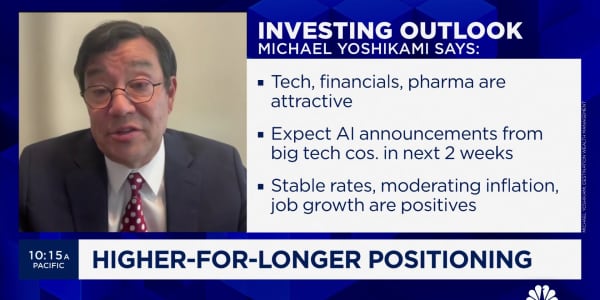
Despite numerous Wall Street proclamations that its demise is near, investors refuse to buy into the notion that the bond bull market is dead.
Strategists like to talk about how the 6-year-old equity run is the "most hated bull market ever," but don't talk as much about all the derision hurled at fixed income. The past several years saw multiple predictions of the "Great Rotation" of money from bonds into stocks, but it's turned into arguably the worst market call of the decade.
The year 2015 alone has seen more than $117 billion in investor cash flow into bond-based mutual and exchange-traded funds, according to respective tallies from the Investment Company Institute and TrimTabs. Equity funds have lagged that total significantly, with stock-based ETFs actually losing nearly $30 billion and global equity mutual funds pulling in just $23 billion, a number that includes $22.2 billion in losses to U.S.-based funds.
Some of the Street's biggest names, though, have been declaring the death of bonds—again. Recent sharp upticks in U.S. and German bond yields have fueled the fire.
Warren Buffett called bonds "severely overvalued" last week. Leon Cooperman at Omega Advisors also used the term "overvalued" and Pershing Square's Bill Ackman, in a televised interview, said he doesn't like fixed income as an investment class.
Bill Gross, of course, made headlines recently when he tweeted that German bunds are "the short of a lifetime."
If this all sounds familiar, it should.
"When it comes to bull markets that are hated the dislike of this little six-year jaunt for stocks pales in comparison to the opprobrium heaped on the bond bull market that started so long ago, back when I actually still had hair," Joseph Calhoun at Alhambra Investment Partners wrote in his weekly market commentary Sunday. "To be exact, the bond bull market started on Sept. 30, 1981, and yields have been falling ever since.
Read MoreThe low volatility rally raises big questions
"Sure, there have been down years during that run but anyone who bought long-term bonds back then, when computers were something that occupied entire rooms ... has enjoyed one of the most historic bull runs ever. And it has been doubted the whole way up, the end always nigh, inflation about to escape its Fed shackles."
What's kept the bond market afloat has been a combination of extremely accommodative monetary policy from the Federal Reserve and its global counterparts, as well as a slow-moving U.S. economy that has proved its skeptics right and its optimists wrong.
Hoped-for growth of 3 percent or better in 2015 is almost certain to miss the mark, perhaps widely. Gross domestic product increased just 0.2 percent in the first quarter when compared to the previous year, and coming revisions are expected to put a minus sign in front of that number. The second quarter looks a bit better, but the Atlanta Fed's GDPNow tracker, which nearly nailed the 1Q number despite Wall Street expectations of growth closer to 2 percent, puts the second-quarter number at a mere 0.8 percent.
Even Friday's nonfarm payrolls report seemed to generate undue enthusiasm. The total job creation of 233,000 was below the 246,000 average for 2014 and came on top of March's anemic number, which was revised all the way down to 85,000.
Productivity numbers have remained weak, and wage gains are increasing at just a 2.2 percent rate.
Taken together, the factors are likely to keep the Fed on hold until at least late into 2015 for a rate increase, and see the central bank moving at a slow pace thereafter while raising rates.
Read MoreHow Yellen may have debunked a conspiracy theory
"With weak population growth, still weak workforce participation and low productivity growth, higher economic growth—nominal or real—is going to be darn hard to come by," Calhoun wrote. "And as long as that remains true—and I see no reason for it to change anytime soon—the odds of a big selloff in bonds, a bear market, are and will remain quite low." (Tweet this)
To be sure, investors this year have had to be selective in their fixed income choices.
Global bond funds in particular have struggled. High-yield corporates have provided decent but unspectacular returns, with the Barclays index following the group up 3.3 percent year to date for global corporates and 3.87 percent in the U.S.
U.S. government bonds have up quite well, though, particularly on the long end. The iPath U.S. Treasury 10-year BullETF has returned 5.7 percent year to date and is up 12.5 percent over the past 12 months, the latter approximating the return for the large-cap stock barometer over the same period.
The iShares 20+ Year Treasury Bond fund has had a harder time of it, losing 4.2 percent in 2015 thanks largely due to a brutal second quarter in which the ETF has plunged 7.7 percent. Still, that fund is up 8.5 percent on a 12-month basis despite the recent damage.
Indeed, longer-term fundamentals seem well in support of the bond play.
"If—when—we have another recession, those long-term Treasurys will be a very important part of your portfolio, zigging when your stocks zag," Calhoun said. "That is, after all, why you own them in the first place—as a hedge against recession. Long bonds aren't dead yet."







